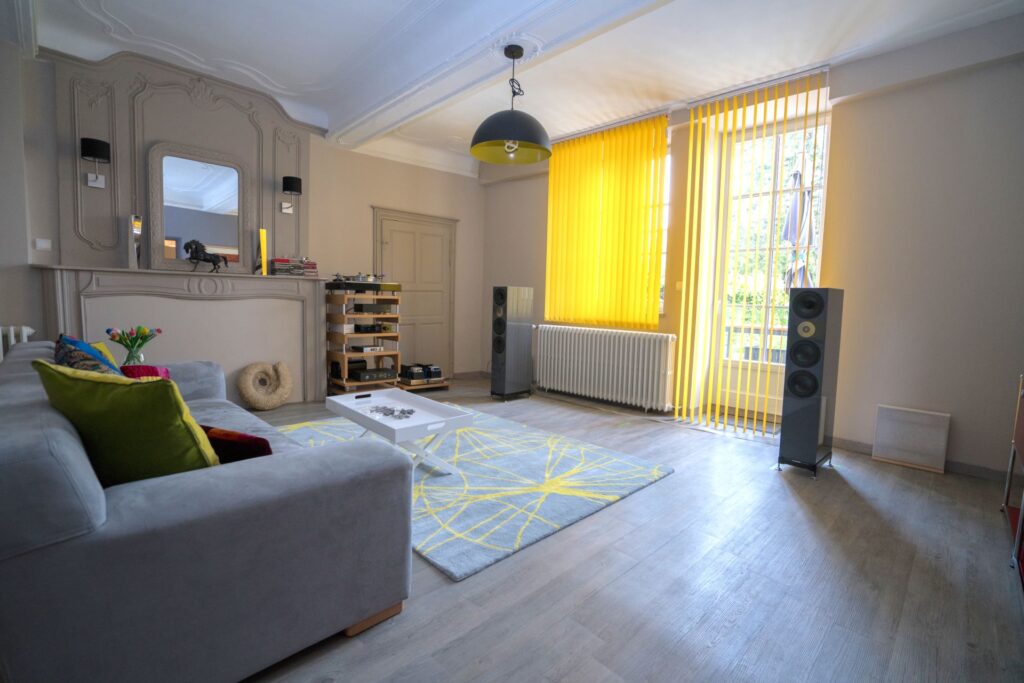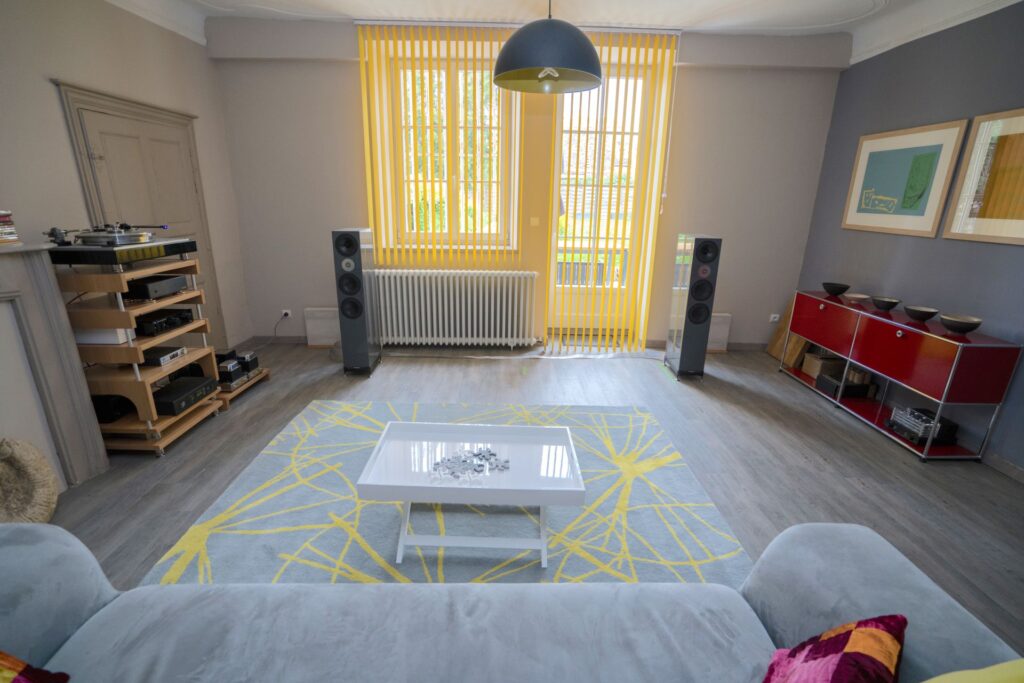Physical Structure and Furnishings
Walls are solid stone with plaster facings. For the most part they are heavily indented with alcoves or similar details and far from parallel. The floor is also solid, overlaid with a modern wood laminate. The ceiling is extremely thick lathe and plaster construction, with significant mouldings, beams and other disruptive elements. The wall behind the speakers contains a large window and door, both sealed-unit double glazed and covered by vertically slatted fabric blinds that offer a surprisingly impressive and tuneable disruptive effect. The floor is covered with a thick, wool rug and furniture is limited to the listening sofa, an armchair and two cupboards. The rear and right-hand sidewalls both contain large aperture openings into adjacent spaces, that themselves also vent into rooms beyond.



